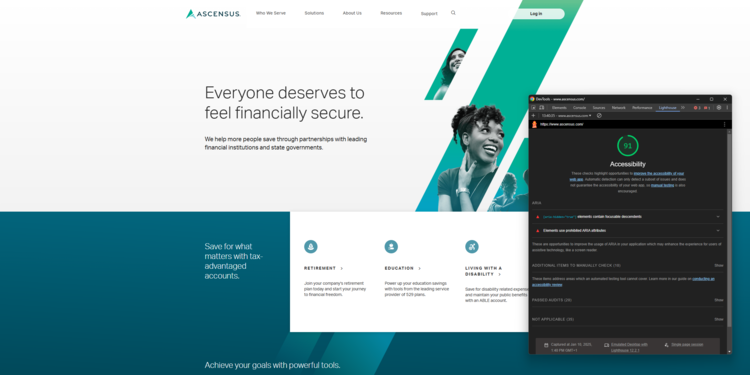How Integrators Can Design the Ultimate Content Author Experience in a CMS? (Integrators Tips Pt.1)

Business team efficiency has become key in a fast-growing digital economy for all industries. As an integrator, you can help provide the necessary agility and autonomy needed for organizations to stay afloat and face competition effectively using the right digital tools. This is especially relevant to their content and website presentation.
This makes the case for CMS platforms as a fundamental element in a digital experience ecosystem. Such platforms not only provide the optimal, most relevant experience to future and current customers as well as website visitors, but also give the platform users (content authors, marketers, and strategists) all the tools they need to build and deliver quality targeted experiences. Your guidance is key to your customers having a tailored CMS that meets their unique business needs.
Start by knowing your business specifications
Any new project starts with requirements and expectations and, ultimately, indicators to measure fixed objectives and conversion rates. Business specifications are an essential step in defining internal contributors as well as what they can create, where content will be placed, and when they should do it.This is vital for not only producing a brand-aligned site design, but also incorporating customer journey objectives for deliberate customer experiences. An often-overlooked focus is ensuring an intentional content author experience for the main users who are charged with delivering a consistent brand and customer experience. In fact, recent studies show that quality technology becomes a factor in staff recruitment and retention so considering user experience is important to an organization’s human resources capabilities as well.
Know your content author capabilities and preferences
Content remains king in the digital world as a primary driver of visitor and/or consumer traffic to your customers’ online channels. Those who create content need to have appropriate agility and autonomy to write and distribute digital assets. Each organization must consider content in context as well as the staff available and their accompanying skills. As a result, implementation will differ to fit the specific business needs of any organization.
Integrators have the responsibility of identifying who will use the results of their implementation; will it be directed to casual users for pure content production and/or will more advanced users be responsible for layout, formatting, and style in their daily tasks? These considerations, as well as user expectations, should drive you in elaborating your customer’s technical specifications to design the optimal content author experience.
Another reason it becomes important to consider technical specifications in advance is understanding the time it takes for integrators to develop an additional feature in a standard development cycle. It can take weeks or even up to months to fully develop a new feature. At the same time, the speed of business is dynamic and users expect changes to be fairly immediate. This expectation is asynchronous to the development process; however, it can be managed by envisioning potential author needs and content generation scenarios in advance.
Support casual and advanced content authors
Not understanding or accommodating content author expectations will lead to frustration and a less-than-optimal experience using the CMS platform. The ultimate goal is to deliver a project that gives authors appropriate autonomy and agility. There are things you can do as the project integrator to ensure this outcome.
The two main elements of content production are Content Types and Content Templates which, technically, are implemented by IT integrators. Generally speaking, a content type exists to produce assets through customizable editorial properties, while a Content Template outlines the page layout showing areas where Content Type elements can be placed.
The responsibility of casual authors is, typically, to produce content. They are limited to sole editorial entries using basic forms, and have the ability to create content in a dedicated folder or page. Such authors are best-served with a simple author interface to avoid confusion and enable peak productivity. Content presentation throughout all channels is handled by a structured layout and design that is usually fixed to guarantee consistency with brand positioning and corporate identity.
Advanced content authors are users who have additional understanding of the technical digital space related to content production and presentation. Their tasks go beyond pure content entry to touch SEO, as one example. They may also have their own custom stylesheet, the ability to add javascript, change the layout of a page, select the number of items in a slideshow, change the color or font of a button, and more. These additional, more complex tasks would be performed using the standard platform backend user interface which avoids technical component deployment. This type of empowerment for advanced content authors must be considered at the implementation level so the relevant properties are added to their permissions. By thinking these needs through initially, content production and presentation during the RUN phase can be efficient and prevent potential delays.
Deliver content in multiple formats
Omnichannel touchpoints are most effective where there is consistency with the brand experience. The elements of a unified global brand experience include not only a single responsive website but multilingual and multi-regional websites for geo-specific information and promotions. Within those versions of the website are product and event landing pages, dedicated business applications, mobile options, and more. Content development needs to fit all those different needs and be relevant to various channels while maximizing author productivity and CMS usage.
Additionally, content that is duplicated or redundant will hurt an organization’s SEO because search engines want to promote unique content vs. replicated content. That means repurposing content must be handled strategically. A quality content platform should offer such capabilities so that an author can contribute once and deliver everywhere according to the required properties.
The more that you focus on content authors' experience, the more content authors can focus on delivering intentionally-designed customer experience.
Implement with agility
As an integrator, you need to understand the larger picture without taking processes or user expectations for granted. It is your role to challenge your users in terms of the experience they will have and the expectations they envision using the technology you deliver. You want your users to be specific in their requirements and think through their bottom-line needs as well as their dream functionalities. Your responsibility is to confront, in the nicest possible way, any missing information, unrealistic expectations, or clarity gaps in what your users provide to you. The end goal is to ensure the system you are designing matches their expectations and enables their peak performance for consistent productivity. This requires that you check in with users on a regular basis. You cannot enter in “development tunnel” mode, working through a features list and waiting until the end of the project for a big reveal. That is a recipe for disappointment for everyone. Instead, be prepared to flex your development with agility through consistent input from your users and content authors. This approach will ensure both your life and theirs will be easier upon completion. And, when done well, such a project can lead to more satisfied customers who will call you future projects.
Key takeaways you can use
It is not enough to focus only on design; make sure your content type definitions and template layouts fit your content authors’ needs, skill levels, and expertise.
Confront and challenge every step of your system design and implementation in terms of enabling a better use of your customer time in their daily content production tasks.
Understand omnichannel content delivery needs to design for and maximize omnichannel content production and delivery.
Remember that the content production life cycle is always now, so if you miss something during the design phase, it can cost you time in development and implementation as well as adversely affect your customer’s (and your!) business results upon implementation.
Your customers, ultimately, determine your business success. The good news is you can be their trusted advisor by soliciting their consistent input and challenging their assumptions to design and implement the best possible CMS for their business goals. Going further, happy customers will retain you for continuous improvements, future iterations of functionality, and to solve needs as they present.
Designing the ultimate content author experience means paying attention to details, user expectations, and your customer’s business needs. It can be a lot to manage. Know that the Jahia team has your back. Let us know how our experts can help ensure you deliver the right capabilities to your customers.


